-
13 results in Exploration of MedicineSort byLatest
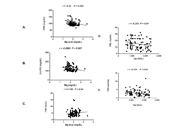 Serum levels of ceruloplasmin and magnesium in polycystic ovarian syndrome: a cross sectional studyOpen AccessOriginal ArticleAim: Polycystic ovarian syndrome (PCOS) is the most common endocrine condition, affecting 5–7% of reproductive-age women worldwide. It is associated with low-grade chronic inflammation, insulin [...] Read more.Pratibha Misra ... Yaongamphi VashumPublished: April 27, 2023 Explor Med. 2023;4:286–298
Serum levels of ceruloplasmin and magnesium in polycystic ovarian syndrome: a cross sectional studyOpen AccessOriginal ArticleAim: Polycystic ovarian syndrome (PCOS) is the most common endocrine condition, affecting 5–7% of reproductive-age women worldwide. It is associated with low-grade chronic inflammation, insulin [...] Read more.Pratibha Misra ... Yaongamphi VashumPublished: April 27, 2023 Explor Med. 2023;4:286–298
DOI: https://doi.org/10.37349/emed.2023.00140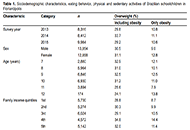 Can we estimate the causal effects of diet and sedentary behavior on schoolchildren’s overweight/obesity from observational studies?Open AccessOriginal ArticleAim: To investigate the causal impact of diet and sedentary behavior on Brazilian schoolchildren’s overweight/obesity using the data from observational studies. Methods: Annual cros [...] Read more.Emil KupekPublished: April 27, 2023 Explor Med. 2023;4:272–285
Can we estimate the causal effects of diet and sedentary behavior on schoolchildren’s overweight/obesity from observational studies?Open AccessOriginal ArticleAim: To investigate the causal impact of diet and sedentary behavior on Brazilian schoolchildren’s overweight/obesity using the data from observational studies. Methods: Annual cros [...] Read more.Emil KupekPublished: April 27, 2023 Explor Med. 2023;4:272–285
DOI: https://doi.org/10.37349/emed.2023.00139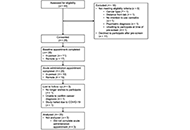 Cannabis use in cancer patients: acute and sustained associations with pain, cognition, and quality of lifeOpen AccessOriginal ArticleAim: Given the myriad of negative sequalae associated with cancer and its treatment, the palliative use of cannabis by cancer patients is increasingly of special interest. This research sought to e [...] Read more.Gregory Giordano ... Angela D. BryanPublished: April 26, 2023 Explor Med. 2023;4:254–271
Cannabis use in cancer patients: acute and sustained associations with pain, cognition, and quality of lifeOpen AccessOriginal ArticleAim: Given the myriad of negative sequalae associated with cancer and its treatment, the palliative use of cannabis by cancer patients is increasingly of special interest. This research sought to e [...] Read more.Gregory Giordano ... Angela D. BryanPublished: April 26, 2023 Explor Med. 2023;4:254–271
DOI: https://doi.org/10.37349/emed.2023.00138
This article belongs to the special issue Beyond Weed: Clinical Applications of Cannabis and Cannabinoids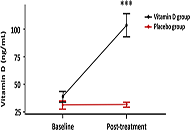 Mechanistic approaching study in COVID-19 patients treated with high doses of vitamin DOpen AccessOriginal ArticleAim: To evaluate angiotensin II (Ang II) and Ang-(1-7) levels and the cytokine profile in patients hospitalized with mild coronavirus disease 2019 (COVID-19) and contrast them with patients with identical clinical conditions but t [...] Read more.Mauro G. Silva ... Walter ManuchaPublished: April 26, 2023 Explor Med. 2023;4:246–253
Mechanistic approaching study in COVID-19 patients treated with high doses of vitamin DOpen AccessOriginal ArticleAim: To evaluate angiotensin II (Ang II) and Ang-(1-7) levels and the cytokine profile in patients hospitalized with mild coronavirus disease 2019 (COVID-19) and contrast them with patients with identical clinical conditions but t [...] Read more.Mauro G. Silva ... Walter ManuchaPublished: April 26, 2023 Explor Med. 2023;4:246–253
DOI: https://doi.org/10.37349/emed.2023.00137
This article belongs to the special issue Lung Fibrosis—Models and Mechanisms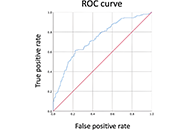 Abnormal glucose tolerance in children: oral glucose tolerance test is fit-for-purposeOpen AccessOriginal ArticleAim: Childhood obesity is accompanied by an increased prevalence of abnormal glucose tolerance (AGT) including the prediabetes states. This study aims to investigate and evaluate the use of oral gl [...] Read more.Vivian Yuet Ho Law ... Louis Tsz Wang ChanPublished: April 26, 2023 Explor Med. 2023;4:235–245
Abnormal glucose tolerance in children: oral glucose tolerance test is fit-for-purposeOpen AccessOriginal ArticleAim: Childhood obesity is accompanied by an increased prevalence of abnormal glucose tolerance (AGT) including the prediabetes states. This study aims to investigate and evaluate the use of oral gl [...] Read more.Vivian Yuet Ho Law ... Louis Tsz Wang ChanPublished: April 26, 2023 Explor Med. 2023;4:235–245
DOI: https://doi.org/10.37349/emed.2023.00136 Impact exerted by scaffolds and biomaterials in periodontal bone and tissue regeneration engineering: new challenges and perspectives for disease treatmentOpen AccessReviewThe periodontium is an appropriate target for regeneration, as it cannot restore its function following disease. Significantly, the periodontium’s limited regenerative capacity could be enhanced through the development of novel [...] Read more.Simona Santonocito ... Gaetano IsolaPublished: April 26, 2023 Explor Med. 2023;4:215–234
Impact exerted by scaffolds and biomaterials in periodontal bone and tissue regeneration engineering: new challenges and perspectives for disease treatmentOpen AccessReviewThe periodontium is an appropriate target for regeneration, as it cannot restore its function following disease. Significantly, the periodontium’s limited regenerative capacity could be enhanced through the development of novel [...] Read more.Simona Santonocito ... Gaetano IsolaPublished: April 26, 2023 Explor Med. 2023;4:215–234
DOI: https://doi.org/10.37349/emed.2023.00135
This article belongs to the special issue Biomaterials and Biomarkers in Dentistry: Up to Date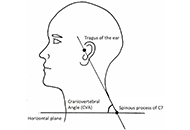 Forward head posture and neck disability: what is the effect on lung function?Open AccessOriginal ArticleAim: Forward head posture (FHP) is a very common pathological neck posture among people who frequently use multimedia devices, and it could be related to some musculoskeletal disorders. However, it [...] Read more.Giada Annarumma ... Felice SiricoPublished: April 26, 2023 Explor Med. 2023;4:207–214
Forward head posture and neck disability: what is the effect on lung function?Open AccessOriginal ArticleAim: Forward head posture (FHP) is a very common pathological neck posture among people who frequently use multimedia devices, and it could be related to some musculoskeletal disorders. However, it [...] Read more.Giada Annarumma ... Felice SiricoPublished: April 26, 2023 Explor Med. 2023;4:207–214
DOI: https://doi.org/10.37349/emed.2023.00134 Immunomodulation strategies against COVID-19 evidence: key nutrients and dietary approachesOpen AccessReviewThe novel coronavirus disease-2019 (COVID-19) has created a major public health crisis. Various dietary factors may enhance immunological activity against COVID-19 and serve as a method to combat se [...] Read more.Lindsey B. Cundra ... David A. JohnsonPublished: April 25, 2023 Explor Med. 2023;4:189–206
Immunomodulation strategies against COVID-19 evidence: key nutrients and dietary approachesOpen AccessReviewThe novel coronavirus disease-2019 (COVID-19) has created a major public health crisis. Various dietary factors may enhance immunological activity against COVID-19 and serve as a method to combat se [...] Read more.Lindsey B. Cundra ... David A. JohnsonPublished: April 25, 2023 Explor Med. 2023;4:189–206
DOI: https://doi.org/10.37349/emed.2023.00133
This article belongs to the special issue The Role of Gut Microbiota and its Metabolites in Gastrointestinal Diseases Development of solid lipid nanoparticle gel for transdermal delivery system of chaulmoogra oilOpen AccessOriginal ArticleAim: The main objective of the study was to formulate, evaluate and perform an optimization study of chaulmoogra oil-loaded solid lipid nanoparticles (SLNs) based gel. Methods: The study involves isolation, identification, and qu [...] Read more.Rabea Parveen ... Sayeed AhmadPublished: April 25, 2023 Explor Med. 2023;4:176–188
Development of solid lipid nanoparticle gel for transdermal delivery system of chaulmoogra oilOpen AccessOriginal ArticleAim: The main objective of the study was to formulate, evaluate and perform an optimization study of chaulmoogra oil-loaded solid lipid nanoparticles (SLNs) based gel. Methods: The study involves isolation, identification, and qu [...] Read more.Rabea Parveen ... Sayeed AhmadPublished: April 25, 2023 Explor Med. 2023;4:176–188
DOI: https://doi.org/10.37349/emed.2023.00132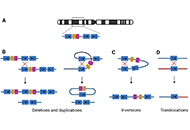 Low copy repeats in the genome: from neglected to respectedOpen AccessReviewDNA paralogs that have a length of at least 1 kilobase (kb) and are duplicated with a sequence identity of over 90% are classified as low copy repeats (LCRs) or segmental duplications (SDs). They co [...] Read more.Lisanne Vervoort, Joris R. VermeeschPublished: April 25, 2023 Explor Med. 2023;4:166–175
Low copy repeats in the genome: from neglected to respectedOpen AccessReviewDNA paralogs that have a length of at least 1 kilobase (kb) and are duplicated with a sequence identity of over 90% are classified as low copy repeats (LCRs) or segmental duplications (SDs). They co [...] Read more.Lisanne Vervoort, Joris R. VermeeschPublished: April 25, 2023 Explor Med. 2023;4:166–175
DOI: https://doi.org/10.37349/emed.2023.00131 -